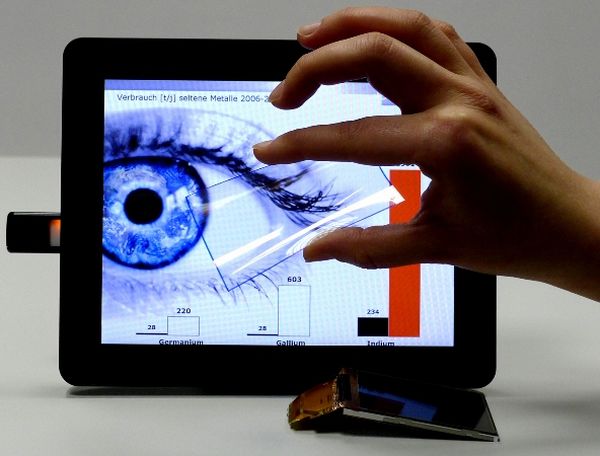
As we know it:
Touchscreens have undergone the true evolution of technology, as we call it. Starting with a somewhat bad reputation right from the mid-’80s, they have gloriously evolved into one of those ubiquitously, lucid modes of interaction, used and coveted all over the world. They are slowly but surely replacing those “old” computer screens, if we go by the examples of numerous offices, airports and even restaurants. With the practical advantages of being much lighter, much faster and even saving space, touchscreens resolutely offers us a clear glimpse into the future; the future of our naturally enhanced interaction with technology itself.
Need for change:
1. Most touchscreen devices run on heavy computing power, which often leads to slow processing and low battery life. In a sense that compels us to dispose of the old batteries in much shorter time periods, finally leading to the increase of carbon trash in the environment, causing severe environmental pollution.
2. Touchscreen displays require indium, which is a very rare and costly element. Statistics say the average price of indium catapulted from being $94/Kg in 2002 to $1000/Kg in 2007, and the supply of the element itself would be exhausted by 2020!
3. High resolution touchscreens require more energy and hence more electricity. Along with the baneful effects of pollution attributed to greater power consumption, it also leads to depletion of coal, as an overwhelming percentage of electricity produced in the world is generated from coal.
4. The technologies imbibed in touchscreens are highly sensitive to weather and so can get just as easily damaged, emanating a higher degree of carbon trash in the atmosphere.
What’s in the future?
1. Eco-friendly iPad with Touchscreen Technology
What’s New?
Apple’s iPad features an eco-friendly touchscreen. The display has an arsenic-free glass with a mercury-free LCD screen. The entire product too is enclosed with recycled aluminum and glass.
2. Samsung unveils the environmentally friendly LED touchscreen
What’s New?
The Samsung 400EX LED LFD boasts the world’s thinnest at just 1.6″ deep, lightest and most energy efficient professional displays. This LED touchscreen display enables users to feel cutting-edge high technology but a reduction of total cost operation and energy consumption.
What difference does it make?
Quite uniquely this innovative technology can be used in other products too! So variant products can maintain the same high level of eco-friendliness and also save substantial energy.
3. New touchscreen technology based on low-cost materials
What’s New?
A team of Fraunhofer researchers have ingeniously designed a cheaper material composite, using carbon nanotubes and low-cost polymers. The inner electrode foil is made of two layers. One is the carrier, a thin foil made of polyethylenterephthalate PET; well quite simply put it is the same cheap plastic used for making bottles. Then an amalgam of carbon-nanotubes and electrically conducting polymers is added, forming a thin film as it dries. Though the polymer is not durable by itself, the carbon-nanotubes makes this composite hardy.
What difference does it make?
Most importantly, this design does not require indium. So touchscreen displays can be made relatively at a much lower cost and they are likely to be as sturdy as the touchscreen displays made by using indium.
The Bottom Line:
At the present rate of consumption, the energy and resource requirements for traditional touchscreens are bound to be exhausted in the near future. Hence keeping that very future in mind, we should look forward to the practically green solutions provided by these progressive yet environmentally friendly products.




